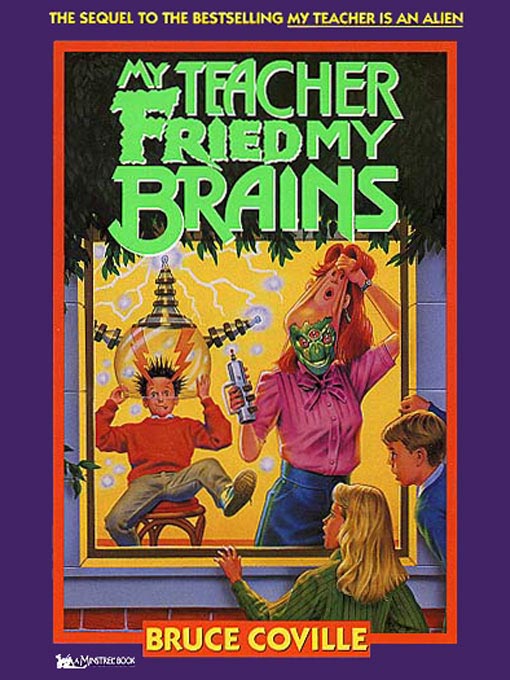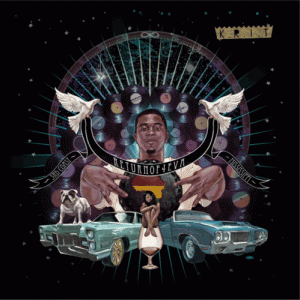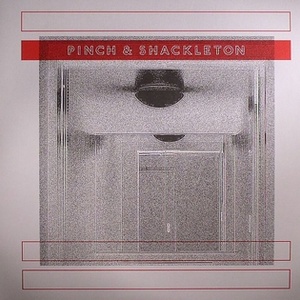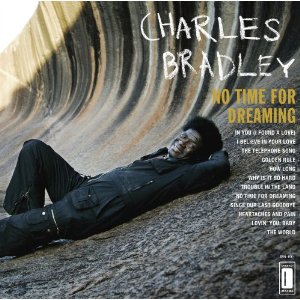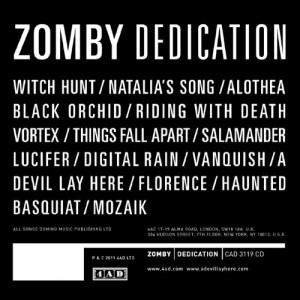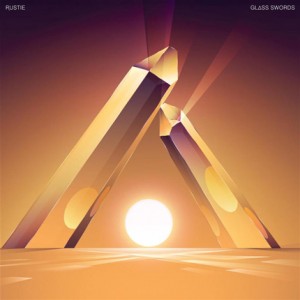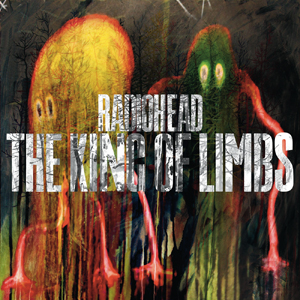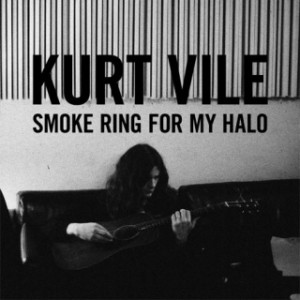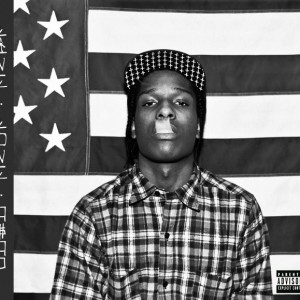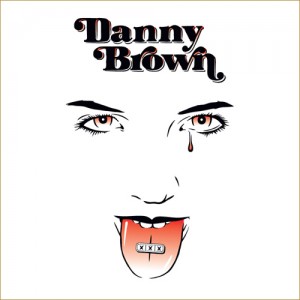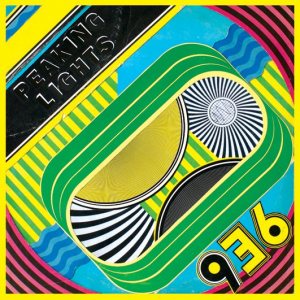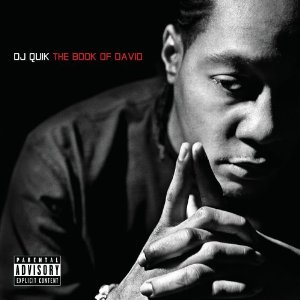Verse two, coming with that Heineken brew….
See Also: Passion of the Weiss Top 50 Albums (#50 – 26)
See Also: Passion of the Weiss Top 50 Albums: 2010, 2009, 2008, 2007, 2006
25. Big K.R.I.T. – Return of 4Eva [Self-Released]
Big K.R.I.T. rose to “next” status not necessarily because of his overly impressive rapping talent, but because of his sheer ability to create beautiful songs. “Hometown Hero” is a classic hood shout out and come-up brag track. It’s also just gorgeous. Return of 4eva, his second full-fledged mix-album-tape, shows clearly that his song making skills extend to album construction. This album is more cohesive than most of the retail albums of ’11, and perfectly captures K.R.I.T. “Highs and Lows” worldview.
Along with its striking structure, the beats are also just dope, with just as much artistry and individual conflict. He’s a southern rap traditionalist with a conscience that constantly questions that tradition. This is lowriding UGK bounce with Jiminy Cricket in the back seat, tempering everything with morality and restraint. See the nasally synth and background shouts of “Oh” on “Get Right.” It’s the soundtrack to a Mississippi banger, disembodied into lonely, thoughtful chunks and loops, pressured and stripped into seriousness.
The fact that a project this long can remain this engaging is a major testament to K.R.I.T.’s earnestness. Every song sounds vital. He is lyrically and sonically exploring and examining the genre and his own character. If the themes get repetitive, it’s only because K.R.I.T. is still trying to teach them to himself. It’s the same idea as the structure of his choruses. K.R.I.T. loves chants, “Time Machine,” “Dreamin’,” “My Sub”; each song finds the 25-year-old repeating the words for his own purpose. He’s echoing the angels and devils on his shoulder, trying to persuade himself to just release and revel, trying futilely to win against temptation. – Tosten Burks
MP3: BIG K.R.I.T. – “The Vent”
24. Serengeti – Family & Friends [Anticon]
Like his favorite rapper, Serengeti has always worn a mask. Family & Friends deploys his greatest array of literary disguises yet. The fake mustaches of the bratwurst-loving Kenny Dennis are temporarily banished. In their stead are idiotic nose-jobbed California bloggers, dead-beat dads, anxiety attacks, heroin junkies, down and out UFC Fighters, and pathological lying bigamists. Serengeti could never send an impersonator to perform. Even when he’s telling lies, his voice is unmistakably clear. So is the self-appraisal: long ears and a short tongue.
David Cohn is sarcastic and sad, both veiled and vulnerable—a paradox that he’s spent the better part of a decade attempting to decipher. He’s worked with dozens of producers, rappers, and crews, some solid, many forgettable. With each album, Serengeti has evolved as writer. Alfred Soto calls him more Beck than Beck, and he’s accurate. There is no pre-existing rap archetype for a dude like this. Half of the songs are adroitly hollowed out by Yoni Wolf of Why? The effect is akin to David Berman if his biggest influence was MF Doom—or a rap Andy Kauffman had he been into the UFC. Despite the varied characters, all share an anomic sense of drift and dissolution; a Family & Friends forever on the fringes. Rap has always been suffused with decay and tragedy, but rarely has it been so saturnine. Or as Cohn points out: you really never know anyone until you’re both ruined. -Jeff Weiss
MP3: Serengeti – “Tracks”
23. Machinedrum – Room(s) [Planet Mu]
2011 was Travis Stewart’s year. In addition to his collaborative project with Praveem Sharma as Sepalcure, the man known as Machinedrum delivered the year’s definitive full-length Footwork statement with Room(s). Flipping Chicago’s high-speed ghetto-house on its axis, Room(s) is an achingly beautiful love letter to dance music and the history of club culture. On paper, this is a dicey proposition — at least Burial had the decency to let UK Garage crumble before bringing it back from the dead. But worry not, this isn’t gentrified Juke, it’s a genuine exploration of the ideas which make the Chicago sound so fascinating.
Connecting Footwork to Jungle and more crucially Hardcore Rave, Room(s) is an album in love with speed, velocity and the élan of a night on the town. It’s equally in love with the memories of those nights out, refracting the joy and euphoria of a good rave through the pastel shaded memories of one too many pills. Everything gets chopped, blended and thrown in the mix: house pianos, 808s, break beats, vocals and more in the search for the ultimate party. But Room(s)’s greatest asset is its vibe: euphoric but nostalgic, reflective yet hyper, it’s the rare album about partying that can both soundtrack the jam and that long car ride home when the morning sun inevitably brings things to an end. – Sach O
MP3: Machinedrum – “U Don’t Survive”
22. Flash Bang Grenada – 10 Haters [Alpha Pup]
Celebrated art rap veterans Nocando and Busdriver summarize their latest side project Flash Bang Grenada on the first track, in two words: “incredibly wordy.” It serves as the duo’s mission statement and central ethos, and it lets the audience know the shit is about to get seriously lyrically lyrical up in this bitch. Be prepared, wayward rap fans, loving 10 Haters is to nerd the fuck out on a couple of dudes spitting the weirdest shit that springs from the dark recesses of the left side of the brain.
This is unapologetic nerd rap without being idiotically nerd-core. An album of silly rap weirdo-isms set to the electro buzz of the hip hop’s avant-garde all-stars. Busdriver and Nocando rhyme about teleportation (“I Can Teleport”), a utopia in which Sarah Palin can speak Farsi (“In A Perfect World”) and the pleasures of being a goofy idiot dancing like a decomposing buffoon (“Bernie.) The duo are ringmasters in a bizzaro world where they can coyly mock wannabe lover men with facial products (“Moisturizer”) and roll their eyes at rap’s perpetual hard-on for casual misogyny (“Beat My Bitch”) on the next track. It’s a perfect world where rapping your ass off still matters. – Doc Zeus
MP3: Flash Bang Grenada – “Beat My Bitch”
21. Pinch & Shackleton – Pinch & Shackleton [Honest Jon’s]
Let’s face it: artistically speaking, this has been a horrible year for Dubstep. They’ve got breakfast cereal commercials with wobble nowadays and if I have to hear Skrillex one more time I’m going to a high school and bullying an emo kid ‘till he snuffs it. Thankfully, every cloud has a silver lining and in this case, that lining is Pinch & Shackleton coming back to show all these new-jack electro kids exactly how it’s done. Combining the former’s love of bassweight and dance music form to the latter’s idiosyncrasies, percussion and obsessive attention to detail this collaboration album proved that original FWD>> formula of darkness, bass and space still had a lot to offer the world.
Tracks like “Jellybones” morph and evolve into evil, mutant creations that threaten to eat your soul, while others such as “Selfish Greedy Life” are a salvia trip in audio form, daring you to go further down the rabbit hole. The cliché is that Dubstep is meant to soundtrack urban environments, and both of these men have done their fare share of sonic street portraiture. Pinch & Shackleton could be a score to the apocalypse: haunting, threatening and more real and engrossing than you can imagine without experiencing it. Dubstep is dead. Long live Dubstep. – Sach O
MP3: Pinch & Shackleton – “Jellybones”
20. Falty DL – You Stand Uncertain [Planet Mu]
The foundation of You Stand Uncertain is as slippery as its name suggests. Even Falty DL’s pseudonym expresses doubt. Fault. This record feels like evaporation, a series of apologies carefully worded, crumbling underwater castles conjured by closed eyes, and a CD case of late 80s rave, analog house, jungle, and garage thrown into a fire. Lustman slips a loop of “Apache,” seraphic jazz, and serrated emotive vocals a la Burial and Mount Kimbie. The effect is disorienting but blissful, sublime but aware that time means erosion.
You Stand Uncertain is electronic jazz extracted and re-constituted to leave you without a compass. Blame Drew Lustman for the disorientation—BK-based and shrouded by hoodies. His mind’s X-Ray is on display, revealing chromatic fissures and fuzzy melancholy. This record conjures the feeling of being 8 years old and attempting to sleep on a Saturday night when your parents are still out, but all you can do is eavesdrop on the killer party next door. You wake up 20 years later, to juxtapose those dusty memories and re-arrange the chords like furniture. But everything is slightly off; the colors are a little less bright and the mood is more come down than all conquering. Time will always win. But melodies remain, uncertain and hanging with the lonely iridescence of Christmas lights in January. –Jeff Weiss
MP3: Falty DL-“Gospel Of Opal (ft. Anneka)”
19. Charles Bradley – No Time for Dreaming [Dunham Records]
“They’ll do anything to keep you on their line. They pit the lifers against the new boys, the old against the young, the black against the white – ANYTHING to keep us in our place.”
I’m still not entirely sure why soul singer Charles Bradley reminds me of the 1978 film Blue Collar. Bradley’s is cinematic music, sure, and the man does have a penchant for grimy overalls. Maybe it’s because Bradley bears a more than a passing resemblance to Yaphet Kotto, whose character Smokey utters these unforgettable lines. (Kotto made a career out of playing blue-collar bruisers: physically intimidating men railing against the inequality of the system at every possible opportunity.)
Bradley’s also concerned with societal inequality, but his is an intimidation of a different kind. It’s hard to remember the last time someone with such pipes appeared in popular music. Every utterance, every moan and cry on his debut album No Time For Dreaming is frightening and compelling in equal parts. The 62 year-old has many decades of struggle to draw upon, including a life growing up on the streets and all sorts of nickel and dime jobs from Maine to Alaska. He lays a lot of this out for the listener in “Why Is It So Hard”, his four-minute query on how to find success in the United States, a “land that’s supposed to be filled with love.”
The concerns of his homeland weigh heavily on Bradley’s broad shoulders. “Don’t tell me how to live my life/ When you’ve never felt the pain,” he half screams, half cries on opening cut, “The World (Is Going Up In Flames)”, as if addressing the political elite who squabble daily on taxes and spending on the poor.
It’s rare to find such socially-minded fare in popular music. But Bradley’s been on the frontline; he’s the genuine article. Perhaps that’s why No Time For Dreaming never feels like an anachronistic throwback. Bradley’s not aping the attitudes and mores from a bygone era; with blue collar America being manipulated, sidelined and promised handfuls of magic beans, his tales are starkly contemporary. Having Tom Brenneck on production helps. Brenneck, much like Gabriel Roth on Sharon Jones and the Dap-Kings’ I Learned the Hard Way or ?uestlove and James Poyser’s work on Al Green’s Lay It Down, knows the value of restraint. Nothing’s overcooked. His Menahan Street band never throw their weight around and eat into Bradley’s vocal space; although they are given their own instrumental, “Since Our Last Goodbye” – great but perhaps a little out of place, or at least out of sequence.
No Time For Dreaming is half a century of hardship distilled into 40 minutes of pain, heartache, longing and love. “You know how people are suffering/ They’re looking for something, something to look up to/ They’re looking for a change,” Bradley sings on “How Long”, the album’s blistering centrepiece. He may be in his early 60s, but Bradley has the feel of a man gathering his strength for the fight ahead. Bring on round two. – Matt Shea
MP3: Charles Bradley – “No Time For Dreaming”
18. Zomby – Dedication [4AD]
If electronic music has taken to extracting and underlining the pain latent in R&B vocals (see: any Burial song, last year’s B-side “Ladywell” from Joy O, which turns Usher into a beyond-the-grave specter that haunts house anthems), then Dedication finds UK producer Zomby highlighting just how lonely—and unsettling—synthesizers can sound.
Dedication is dance music uncomfortable with the thought of being danced to, and that tension reveals itself in unexpected ways: jerry-rig a pounding four-on-the-floor beat to “Black Orchid” and it becomes a massive, 8-bit thumper. But the beat never arrives, and with nothing to keep them tethered to reality, the track’s polyphonic synths shift and lurch in all directions, oozing menace and paranoia in equal measure. What would be a showstopper for your average producer like “Natalia’s Song” is brought out as Dedication‘s opening credits are still rolling across the screen. Later, when a supercomputer’s motherboard disintegrates and Animal Collective’s Noah Lennox tries with all his psychotropic-ingesting choir-boy power to keep order as his surroundings race toward entropy, you might forget that “Natalia’s Song” even exists on the same long-player.
Sequenced like a great DJ set, Dedication alternately rumbles and recedes with masterful precision. It could be the world’s most terrifying jump-rope competition, where the losers are hung with the very ropes they jumped with (“Digital Rain”), or a crime boss-only art-auction (“Basquiat”). Where were you in ’92? It sounds like Zomby was stuck in the Grid. – Renato Pagnani
17. Rustie – Glass Swords [Warp]
I guess Rustie just said screw it, and decided to make the soundtrack to our imminent destruction a year early. Even the song titles (“Hover Traps,” “Death Mountain,” “Cry Flames,” “After Light”) sound like scenes from the apocalypse. But this isn’t some kind of baleful mourn fest. As the skies cave in and everything starts to reek of sulfur, brimstone, and cinnamon (that’s what it’ll smell like, trust me) the Glasgow native fires up the speakers for one last hurrah as everything starts to melt into the aether. Glass Swords finds movement and melody in the eye of chaos as Rustie transforms a plethora of sources into bright, flat, hyper-kinetic ear candy.
The album’s accessibility is the biggest surprise: “Hover Traps” sounds like it could have been conceived by Dr. Luke while “Ultra Thizz” breaks the rave anthem down into its basic elements and stretchs them until we can see their ribs. Rustie mashes and blurs sound like each song was a marathon 3 minute Tetris game as lurid blocks of color combine intricately for three minutes and disappear in a flash. No matter how many elements Rustie adds to the mix nothing seems out of place or forced. As Glass Swords closes with the transcendent “Crystal Echo” you realize that even if there’s no clear reason for this eschatological symphony, that none of it has to matter anyway. If this is the soundtrack to our descent into the void maybe the other side will only be that much better. – Jonah Bromwich
MP3: Rustie – “All Nite”
16. Radiohead – King of Limbs [XL Recordings]
Following the release of their eighth album The King of Limbs in May, Radiohead arguably had their most successful year to date. Despite outcries from some critics and former fans that their new album was too short or too weird, those who’ve checked for Radiohead since The Bends have come to expect the unexpected, especially when the band’s two main composers Thom Yorke and Jonny Greenwood have been experimenting with genres such as classical, jazz, and electronic music for the past several years.
The unconventional arrangements on the album become more clear when you realize that while technically still a rock band, Radiohead really hasn’t released a traditional, radio-ready song since “Creep”; it’d be simply embarrassing to try and return to that format 20 years later. With only eight songs, it’s easy to peg The King of Limbs as “short” compared with the sprawling Hail to the Thief, but depth is certainly more the focus here. Here the band instead concentrates on employing free-form arrangements to allow melodies like the opener “Bloom” build and breathe at the exact appropriate moments.
On “Bloom”, when the bass cuts out halfway through the song, letting the string section soar alongside record scratches and chirping birds, it’s a genuine moment of splendor unlike any in recent musical history. Even the piano-ballad “Codex” has a flexible arrangement that allows the band to expand and fill out certain gaps. Probably the best example of the band’s willingness to incorporate other genres though is the instrumental track “Feral”, essentially a three-minute dance track hinged on a pulsing bassline peppered with samples of Yorke’s trademark yelps and howls. It’s the clearest view of Radiohead pushing forward. Never before has a rock band been able to so seamlessly incorporate jazz and electronic music in to their own unique songwriting style.
When considering TKOL as a whole, it’s also quite important to point out its thematic relevance. Yorke has previously discussed the influence of Eastern philosophy and The Tibetan Book of the Dead in interviews, and while his lyrics in the past have portrayed this quite clearly, the similarities between the cycle of reincarnation and the song order on the King of Limbs are striking. Considering this, it then becomes easier to see “Bloom” as representative of birth, “Codex” as death, and “Separator”, with the simple yet poignant line “If you think this over, you are wrong,” as rebirth.
While some songs may not stand out as much as others, when looking at from this perspective, it becomes clear that each one has a particular purpose and meaning. So while “Morning Mr. Magpie” may not be one of the band’s strongest songs, there’s still a certain depth and weightiness to it that the recently released B-sides do not bear on their own. In an economic downturn when most bands are focused on keeping their fanbase happy, it’s quite satisfying to see Radiohead still willing to take these huge risks. – Aaron Frank
MP3: Radiohead – “Lotus Flower”
15. Frank Ocean – Nostalgia, Ultra [Self-Released]
2011 marked the first time in this generation of music that R&B supplanted Hip Hop as the genre of ideas. It was an unlikely, gentle soul who lead the charge. Frank Ocean’s debut opens with a Coldplay cover lamenting the end of a childhood romance. It closes with the image of his lost love taking off in a spaceship, leaving him behind on an Earth on the verge of apocalypse. The album then segues into “Novocain,” taking us on a journey through a fire scorched realm of emotional baggage, while Frank contends with numbness and passionless sex. It’s all all rendered in the New Orleans native’s meticulous, detail-rich pen.
The real accomplishment of Nostalgia, Ultra is that Frank manages to write passionately about his lack of passion; this trait is what separates his music from the Weeknd’s almost-gleefully hedonist drug-fueled sexcapades. We feel empathy and see him as a fully formed protagonist as he stumbles from song to song and girl to girl on his brilliant debut. It’s that lyrical prodigiousness that earned the industry’s undivided attention. It’s the reason Odd Future will one day be little more than a footnote at the bottom of his Wikipedia page. –Abe Beame
MP3: Frank Ocean- “Songs For Women”
14. Kurt Vile – Smoke Ring for My Halo [Matador]
Props are due to Kurt Vile. He managed to get to his fourth album before his psyche started cracking. In the three years since his first solo bow, Vile has become a singer/songwriter with remarkably singular quirks. His songs sound like elliptical fever dreams, full of rambling half-poetry written under storm clouds. He doesn’t so much sing as talk tunefully; his verses are full of unorthodox syncopation and uncomplicated language. Entire stanzas of his own lyrics are reused in other songs; it’s like he writes all of his words with invisible ink and attempts to recite them from memory.
On Smoke Ring for My Halo, Vile turns the blurry lens on himself and flinches at what he sees. Depressive down tempo numbers about being on tour, explicitly referring to himself as a “puppet to the man,” fantasizing about lying down in bloodbaths, and repeatedly stopping his day to take stress naps. He’s disinterested, he’s weary, he’s brazenly misanthropic. On “Baby’s Arms,” the album’s opener and clear-cut love ballad hangs on the refrain “I get sick of just about everyone.” He passive-aggressively undercuts himself and whoever happens to be in the room with him, backed by hazy updates of classic-rock and dazzling folk finger-picking.
Closing track “Ghost Town” sounds like Wilco’s “I Am Trying to Break Your Heart” on Quaaludes, with Vile sleepwalking through the titular scene as colorful flourishes springing up all around him as he takes his steps. “Raindrops may fall on my head sometimes,” Vile sings, “But I don’t pay them any mind.” The thing is he knows he’s being falsely optimistic here, as Smoke Ring for My Halo finds the once-notoriously withholding songwriter ushering listeners into his headspace, the moment where the self-proclaimed childish prodigy grows up. It’s the perfect album for when you have a lot on your mind, the best accompaniment for going through two packs of red apples on a long ride home. –Douglas Martin
MP3: Kurt Vile – “Jesus Fever”
13. Toro Y Moi – Underneath the Pine [Carpark Records]
2011 saw the dearth if not the death of chillwave. One of its sole survivors may prove to be Chaz Budnick, who has transcended his genre’s fate by giving it a shot in the arm. Budnick didn’t escape the tranquil confines of his electro palette so much as he opened them up. He’s injected funk and most importantly, fun into his lush soundscapes making Underneath the Pine his second and best album. The “dare you not to dance” big single “Still Sound” is a monument to his leap forward. It’s still one of the best singles in a crowded year.
I had the opportunity to see Washed Out at an outdoor concert in the summer of 2010 and Toro Y Moi at the Bowery Ballroom in Summer 2011. The contrasts were telling. The almost exclusively white, striped tank-topped, narcotized, twenty-something masses swayed to Ernest Greene’s gentle bounce. If you live in New York you’ve been to a million shows like it; the ADHD-addled crowd seems to have moved on to the next flavor of the month by the time the concert starts. On the other hand, an electric, eclectic mix of generation, race and style, from Hipster to Hip Hop ecstatically got down to “Still Sound” with no preen or posture, just sheer joy. This bridge in sound Budnick has built, and the bridge he has crossed in terms of fanbase, suggests legs. A future rather than a fad. – Abe Beame
MP3: Toro Y Moi – “Still Sound”
12. Wooden Shjips – West [Thrill Jockey]
West is a sprawling monolith even by psych-rock standards. But when the central theme of your album is the vast expanse of the American West, you can assure the free-flowing highway and blazing hot sun vibe is present by design. Texturally, rhythmically, and songwriting-wise, West is the perfect road-trip record for people who use their iPods to drown out the subway.
Many of these songs have the rare distinction of being measured bursts of intense, chess-champion-level concentration disguised as freewheeling, hands-off-the-rail jams, the rhythm section fusing together and running like a machine while guitarist Ripley Johnson breaks away from his main riff to sputter sparks from his guitar. “Home,” from the album’s flawless middle stretch, has a snarling Rock God riff just begging to be saluted with devil horns and air guitars by Beavis and Butthead. Not only does the song have a more varied structure than the taffy-stretched two-bar (maximum) motifs of earlier Shjips classics, but after the second chorus, Johnson rips the song into pieces with the kind of hair-whipping, life-altering guitar solo that most fashionable musicians don’t have the stones to attempt, proving that he’s among a dying breed of incredible guitarists.
Some bands have the game all fucked up. In an attempt to smooth the edges of their sound, they sand them completely off, trying to become more accessible by completely removing what made them compelling in the first place. Wooden Shjips don’t do that on West. They didn’t hollow themselves out and glossy up the shell. They streamlined their more outre tendencies; they went headlong into the unbeaten path while still remaining compulsively listenable, maybe even more listenable than they have ever been. West is the sound of a great band stepping into rarefied air, delivering the classic album their devoted cult of fans knew they had in them. It’s an album as deep and majestic as the American West. –Douglas Martin
MP3: Wooden Shjips – “Lazy Bones”
11. The Caretaker – An Empty Bliss Beyond This World [History Always Favours The Winners]
 My grandmother is 80 years old and still murmuring memories about ballroom dances with deceased partners over a half-century ago. Lost nights at the Coconut Grove, swinging to the soft jazz and clarinet trill of her (and my) cousin, Benny Goodman. Frank Sinatra’s tiramisu rich baritone and brown liquor in parked Packards on smog-pink summer nights. No matter the song, she will elide the lyrics and belt out the melody—“la di da, da deed um, dee dee da.” Her idea of making it rain is “Pennies from Heaven. “ It used to drive me insane when I was a child, but now that I am aware of her mortality, it’s charming and anachronistic.
My grandmother is 80 years old and still murmuring memories about ballroom dances with deceased partners over a half-century ago. Lost nights at the Coconut Grove, swinging to the soft jazz and clarinet trill of her (and my) cousin, Benny Goodman. Frank Sinatra’s tiramisu rich baritone and brown liquor in parked Packards on smog-pink summer nights. No matter the song, she will elide the lyrics and belt out the melody—“la di da, da deed um, dee dee da.” Her idea of making it rain is “Pennies from Heaven. “ It used to drive me insane when I was a child, but now that I am aware of her mortality, it’s charming and anachronistic.
The Caretaker is Leyland Kirby. “An Empty Bliss Beyond This World” is a compromise between romanticism and realism. Old pre-war ballroom 78s chopped and re-purposed to illustrate the point of an Altheizemer’s Study that suggested that song memories linger longer than any other. Kirby’s Caretaker guise is part curator, part cut and paste artist. There are no original notes on this record and it isn’t a reissue. It’s a fallen power line of memory inciting sparks from dimly remembered corners of brain—a record that inspires different devotion in everyone.
For months, it was the soundtrack to every drive home at 2:00 a.m, never failing to wipe clean the evening’s insignificant ash. An Empty Bliss allowed me to see underneath the costume of the city. I devised pleasurable delusions: driving through art deco LA, carbon street lights and glittering movie palaces. The streets flushed free of cars until I was gliding in an iron horse straight from The Big Sleep. I could lurch into the hills, searching for loose dames and dangerous goons drink three high ball lunches, and make passes at femme fatales with Rita Hayworth hair. Every teenage anthem and oath eventually becomes an oldie. This was like listening to the best station that may never have existed. –Jeff Weiss
MP3: The Caretaker – “Tiny Gradations of Loss”
10. A$AP Rocky – LIVELOVEA$AP – [RCA / Polo Grounds Music]
Critics who labelled Live.Love.A$AP as post-regional seemed to miss that regional rap died years ago. It was killed by North Carolina-via-NY acts like Little Brother and J. Cole, and more recently by Dirty South scholars like Freddie Gibbs and Big K.R.I.T. The idea that Rocky is New York via Houston is convenient but ill fitting.
Rocky is more post-modern than post-regional, dipping into styles and subcultures like a writer borrowing genre to suit his needs. He drops into the pocket with a few bars of breathy, rapid fire Cleveland spit mid-verse, he slows it down with a little melodic Texan flow. Yes, Rocky is rapping about lean and occasionally screws his vocals, but the words are delivered a crisp, distinctly East Coast cadence. Rocky changes a regional sound that benefits from a modicum of Gotham discipline.
It sounds easy but it isn’t, and Rocky manages to pull it off with an almost mystical instinct, the type it took a seasoned vet like Rick Ross albums to hone. Rocky is unique because he understands his sound and the way it works better than any young artist since the RZA. Live.Love.A$AP doesn’t have a beat out of place, the style is fully realized. The album is cohesive and perfect. And if all that wasn’t enough to sell you, JESUS FUCK, A$AP FERG. – Abe Beame
MP3: A$AP Rocky – “Bass”
9. Sepalcure – Sepalcure – [Hotflush Recordings]
Praveen Sharma (Braille) and Travis Stewart (Machinedrum) are listeners as much as they are authors, and their full-length debut as Sepalcure can seen be as a cut-and-paste exercise, melting together strains of dance music that have splintered into their own directions over the last few years. But Sepalcure isn’t an art project, something to admire from a distance and appreciate its theoretical legwork. Its pleasures are of the physical variety, often gut-punches of beauty and back slaps of fluorescent melody.
Take the tie-dyed synths of opener “Me” for instance, which float in and out of focus as the track glides forward with weightless grace. Burial-like vocals howl from inside the bowels of the track, yearning for release. “Hold On” is a fuzzy thumper that changes shapes while tethered to this terrestrial realm by hand drums and weighty claps. Sharma and Stewart incorporate a variety of characteristics from the many sub-sub-sub-genres of modern dance music. Sepalcure doesn’t sound like a patchwork because rhythm and melody remain harmoniously arm-in-arm.
Sepalcure is dance music with softened edges but a sharper focus on emotion. So while “Eternally Yrs” races forward with the pedal to the floor, its melodies give the illusion the track is moving at slower pace. “Breezin'” pulls a similar trick with volume instead of speed. A glitchy chunk of call-and-response builds up for three minutes until the rave clears out until the haunted melodic vocal has the entire dancefloor to itself. “Eternally Yrs” shudders with blooming synths that would fill entire warehouses, iridescent colors that sigh, and city streets that stretch on for miles, moaning in dusk’s exhausted light. On the other end of the spectrum, “Yuh Nuh See” is 8-bit dubstep that opts to weave in romantic house pianos instead of yield to jackhammer drops.
It feels like no matter what aspects of dance music that Sharma and Stewart try and recombine into new shapes—be it the jumpy rhythms of footwork or the paranoia of dubstep’s irregular heartbeat—they manage to find a way to make them place nicely together. Both producers understand that there’s a primordial connection between these sounds, and with the speed that dance music changes, sometimes it’s worth taking a breather and figuring out how it all fits together. The result is Sepalcure. – Renato Pagnani
MP3: Sepalcure – “See Me Feel Me”
8. Open Mike Eagle – Rappers Will Die of Natural Causes – [Hellfyre Club]
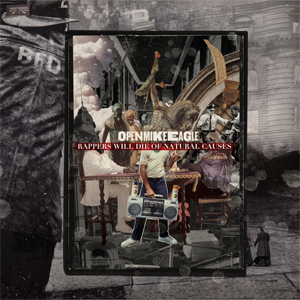 L.A. by way of Chicago rapper Open Mike Eagle is an oddity in the rap world. His album explores black masculinity and perception in North America society over Low End Theory beats.
L.A. by way of Chicago rapper Open Mike Eagle is an oddity in the rap world. His album explores black masculinity and perception in North America society over Low End Theory beats.
Mike delivers his musings in a delicate stage whisper, which fluidly moves between rapping and singing in a manner reminiscent of Devin the Dude and fellow Blowedian Busdriver.
“NH2” is a tongue-in-cheek reminder that black men aren’t invincible, while “Right Next To You” works both as a note to Mike’s discreetly racist neighbours and to the American white establishment. He meets a fine girl but he’s too subtle. These thought aren’t pulled out in screeds against the government, the Illuminati or organized religion; they come out while Mike is washing dishes, wondering why he didn’t think of Twitter or musing about his preference for food truck tacos (heavy sour cream, no cilantro).
Production is indebted to the Low End Theory sound, blending blurry bass, oscillating synths and stiff eardrum popping drums. Beyond his fellow Swim Team rappers, guests include fellow rap iconoclasts P.O.S. on “Why Pianos Break” and MC Paul Barman, who chronicles a friendship’s comical disintegration on “Exiled From The Getalong Gang”.
The title track is a thesis statement, evaluating rap’s originators three decades since the genre’s inception. Mike offers realistic corrective to Jay-Z’s “I’m overchargin’ niggaz for what they did to the Cold Crush”:“his record label never told them about the flight plan/they shot videos on beaches with white sand”. Because they took rhymes serious, most of Mike’s heroes will die penniless. So “Bright Green Light” comes as a corrective, a sincere yet bemused call to action for any frustrated creative to fight the naysayers inside and outside your head.
It’s a credit to Mike’s writing skills that I’m tempted to make this entire review out of quotes. It’s a feeling I’ll resist. Just listen to the man’s words. –Aaron Matthews
MP3: Open Mike Eagle – “The Processional (The Funeral March)”
7. Shlohmo – Bad Vibes [Friends Of Friends]
The secret to success, or at the very least acceptance, at LA’s famed Low End Theory is simple: define your own style and bring something to different to the table. This is what’s helped the weekly night expand so rapidly over the years, and it’s also what producers like Flying Lotus, Matthewdavid and now Shlohmo, took note of as they attended the club first as fans before setting off on their own musical journeys. Shlohmo, real name Henry Laufer, grew up in Los Angeles and attended Low End religiously before moving to San Francisco for art school, which he summarily dropped out of this year prior to the release of his first full-length. Releasing his first two EPs in 2009, Shlohmo’s name began bouncing around on the internet and throughout LA last year after the producer travelled back for several performances and released an excellent 20 minute mix for Mary Anne Hobbs’ BBC program.
While most artists used their time on the show liberally, switching off between radio hits and originals as with any typical DJ set, Shlohmo saw the importance of such a huge platform, and instead chose to get the most out of each track, reworking the highlight “Tomato Smash” in to a high frequency head-banger and rinsing every last second of the track, which later appeared on his Camping EP. After turning heads internationally with his mix, the Camping EP supplemented Shlohmo’s newfound popularity and helped establish a cozy relationship with L.A. indie outfit FoF Music, who also released his Bad Vibes LP in September.
The release marked a major turning point for Shlohmo, who produced all 12 songs without the aid of samples and sang all of his own vocals. The Camping EP showed Shlohmo parting with his original inspirations in Flying Lotus and Matthewdavid, and starting to define his own sludgy hip-hop style, but Bad Vibes almost makes a break from the Low End scene entirely, bringing forth a new sub-genre of ambient, screwed up electro-pop. Constructing every song from scratch, you get the sense Shlohmo likely developed a new creative process for himself while making the album, essentially rooted in ambient music and containing wondrous field recordings and guitar strums combined with an array of heavy distortion and processed vocals. But the composition on most songs, especially in regard to the basslines and vocals, maintains a decidedly precise and measured feel.
Plain and simple, it’s clear that Shlohmo labored over every last detail of the album, emphasizing preciseness where appropriate on songs like “Places” and “Just Us” and clearing the way for improvisation on lighter tracks like “Seriously.” For every track with a solid beat and discernable rhythm, there are equally as many successful experimental reaches, as with “Trapped In A Burning House”, which in a live setting takes the concept of “Wall of Sound” to new heights. With this technique though, Shlohmo’s goal isn’t to simply beat you over the head with bass and effects until you’re a believer; it’s to implement them in the most concise way possible in order to draw an emotion from the listener. This technique is implemented quite successfully on Bad Vibes, making it both one of the most impressive and progressive albums of the year. – Aaron Frank
MP3: Shlohmo – “Places”
6. Danny Brown –XXX [Fools Gold]
What you’ll first notice about Danny Brown is his Sadat X meets Daffy Duck cadence, which awkwardly pitches upward when he says the words Muay Thai. Derelict carnival beats match a thirty year old man’s barefaced crisis. Danny’s demented clown voice used to be an accessory to a forceful Detroit rapper. Now it’s the squawk of a man living and narrating the second segment in his own episode of Behind the Music – the part where everything goes to shit. He draws the parallels for you: a litany of dead rockstars join him in a den of drugged-up porn hoes. He and the Bruiser Brigade prowl for blowjobs and beer, bumping Waka Flocka in their jeep for motivation.
We get to watch Danny sputter out of control in a psychedelic binge. It’s incredible. Adderall and booze help him make sense of this juncture in his adult life where his dick is alternately a lasso and a bull. “Blunt After Blunt” is a fireball of inebriated confrontation and hardcore sex. Danny’s the most feverish on “Detroit 187” where he deliriously spouts punchlines, but hasn’t fallen so low that he can’t out-rap everyone younger than him, “I’m so institutionalized / I wake up 6 AM because I think its chow time / I’m a borderline porcupine / A step from drinking turpentine / Just to wash down a plate of these wack rappers’ rhymes.” Is it too early to place him among hip-hop’s greatest drugged up oddballs?
Then Danny wakes up drooling on a Versace pillowcase, salient details provided in a moment of relative sobriety, his voice drained of its trademark hysteria. He watches self-destruction from a distance with brotherly pity when he could have just signed off in a glorious torrent of pills three songs earlier. “30” is where he finally howls a dying man’s pain with bulging bloodshot eyes. XXX is an uncomfortably honest self-portrait made even more remarkable by the fact that Danny Brown is alive to tell the story –Evan Nabavian
MP3: Danny Brown – “Scrap Or Die”
5. Peaking Lights – 936 [Not Not Fun]
Describing art as “childlike” often implies immaturity. You think of something crude, amateurish, hastily drawn. But the truth is children are more intuitive than we give them credit for; they also have the kind of imagination and honesty that almost completely falls away when they start learning what’s “cool” and “uncool.” 936 sounds like it was made by children. Judging by its spot on this list, I obviously mean that as a compliment.
Indra Dunis and Aaron Coyes use slinky dub grooves as a template to color outside of the lines, filling their songs with sparkling, glittery flourishes. Dunis’ keyboard lines are delivered in blurry, broad strokes while Coyes uses his six-string to scribble outside of the margins. They turn woozy on “Birds of Paradise (Dub Version),” bouncy on “Tiger Eyes (Laid Back),” and “Hey Sparrow” sounds like a field recording of a lucid dream.
There’s also a pleasurable innocence to Dunis’ vocals, with her playground melodies alluring enough to give the songs a heightened air of beauty, but breezy enough to keep them from sailing out of the galaxy. The genuineness of “All the Sun That Shines” and “Amazing and Wonderful” make them feel like valentines crafted out of markers and heart-shaped cardboard paper.
Much experimental music is engineered to connect to the brain and not the heart; it tends to be listened to and discussed studiously. 936 forgo the brainy trappings by tapping into nostalgia not for a specific cultural period but for a specific period in everyone’s life: childhood. We sometimes forget that we can learn a great deal from kids. – Douglas Martin
MP3: Peaking Lights – “All The Sun That Shines”
4. Shabazz Palaces – Black Up [Sub Pop]
Not even the most optimistic of fans could have predicted the success of Black Up, which catapulted the mysterious Seattle duo from avant-garde rap curiosity to New Yorker approved critical darling. It’s winding, dense, and at times, profoundly unmusical. Ishmael Butler turns his nose up at swag rap and tired gangsta tropes in fa avourf heavy afro-centrism and impressionistic, stream-of-consciousness observations. The album’s lead single has a middle section that features the kalimba. This isn’t the type of rap music people typically fall over themselves to praise.
It’s a testament to the singularity of Butler’s vision, not to mention the dozen-or-so musicians who also contributed to the record. Each song hosts enough ideas to carry any other rapper through at least half an album. Styles are plucked from a number of locales: the Cotton Club, Africa, the furthest reaches of space. It’s a 34-minute tour-de-force of The Black Experience, offering a high-minded perspective of the marginalized. “Corny niggas” aren’t MCs in skinny jeans, but the shuck-and-jive Sambo rappers happy to play up stereotypes for a quick buck.
Alternately dystopian and idealistic, Black Up captures a wide array of human emotion in its mostly digital casing, where the love song is just as experimental as the one about pulling a fast one on the cops. It’s as imaginative as it is incisive; wildly adventurous enough to push the boundaries of hip-hop music. If you ever hoped rap would produce its own Kid A, the wait is finally over. –Douglas Martin
MP3: Shabazz Palaces – “an echo from the hosts that profess infinitum”
3. DJ Quik – Book of David [Mad Science/Fontana Distribution]
The twilight of West Coast gangsta rap finds our legends in strange places. Dr. Dre has become the world’s greatest headphones salesman, Snoop Dogg latches onto the pop star of the moment in a never-ending quest to stay on Z100, Ice Cube is trying to get that Tyler Perry money, and E-40 releases an album every time Jay-Z and Kanye perform “Niggas in Paris.” I was going to use a Watchmen allegory where Snoop is Oxymandias and Dre is Doctor Manhattan, but it wasn’t hitting.
Then there’s DJ Quik who had all but quietly faded into hip-hop ether when he and Kurupt loudly reinstated themselves in 2009 with BlaQKout. The Book of David followed this year as an eleventh hour masterstroke where Quik emerges from two decades in the meat grinder that is the recording industry to speak his mind like it’s nobody business.
Luckily for us, Quik’s catharsis takes the form of street corner battle rap taunts and matured party funk. He bops on poolsides and dance floors to lithe 80s loving of his own creation. “Nobody” serves the consummate dance party while “Killer Dope” is a stinging and personal lecture on gangster rap. Even when Quik airs out the bad blood with his sister (his sister!) on “Ghetto Rendezvous,” it’s with lunchroom jeers and a sing-song ‘here-we-go-again’ hook.
The Book of David is the realization of the Compton swagger, confidence, charisma – whatever you want to call it – that DJ Quik personifies. It’s only right that it took twenty years to drop. –Evan Nabavian
MP3: DJ Quik – “Fire And Brimstone”
2. Nicolas Jaar – Space is Only Noise [Circus Company]
Space Is Only Noise is all potential energy, a collection of grooves that sit on the precipice between stillness and motion, thumbing its nose at gravity. It’s sensual but never soporific, content to hint at and gesture toward instead of breaking into a sprint in any specific destination. It massages; why fuck when the foreplay is just as satisfying? Twisting house music so it looks like hip-hop but moves like techno—really, really stretched and warped techno—Jaar’s guiding hand is a graceful but muscular one. At points it’s difficult to feel his push, but it’s always there, even when he’s suggesting more than commanding. It’s understated, but make no mistake: Space Is Only Noise will suck you in like a black hole.
Jaar’s strengths as an arranger give his compositions ample room to breath; when he chooses to let the synths loose as on the cosmic disco throb of the title track, every piece clicks into place with the satisfaction of finishing a 1500-piece puzzle. Jaar’s just as good with mood as he is with pace: the subterranean warmth of “Balance Her in Between Your Eyes” invites with a smile and a hint of something evil somewhere in the back in its eyes. “Too Many Kids Finding Rain in the Dust” hovers at a tensile point just below implosion. “I Got a Woman” could even be rapped over, with plenty of folds in its fresh-out-the-dryer-warm blankets for emcees to sink into, if it wasn’t for its just-before-bed crawl.
Jaar’s beyond-the-dancefloor tendency nods toward Ricardo Villalobos, his playfulness toward DJ Koze, someone who will shape an entire track around female tennis grunts and ball thwacks. Also present, the cheekiness of Matias Aguayo: a winking, circular lyric like “What happens all the time, it happens all the time” might be banal, but that doesn’t make it any less true. And its speed might be mostly creek-like, but that doesn’t make Space Is Only Noise any less of a dance record—it’s just that the kind of dancing it’s mean to soundtrack occurs at an orientation separated by 90 degrees. It’s this embrace of slapstick that tempers what Jaar is well aware will be construed by many as pretentious—the nods to musique concrète, the vocal snippets from old French films (like on “Colomb,” which borrows from the 1967 Robert Bresson film Mouchette). But the real triumph of his debut might be that Jaar can thread together so many disparate sounds and end up with a product as cohesive and natural sounding as it is. Everything in its right place, indeed. –Renato Pagnani
MP3: Nicolas Jaar-“Keep Me There”
1. Kendrick Lamar – Section 80 [Top Dawg Ent]
He dead. Kendrick killed him. Rappers don’t croak from songs, they get shook and offer MP3 yawns over “I’m On One.” What Kendrick did was the dispose of the body-in-the-trunk baggage of 20 years of West Coast gangsta rap. Nothing better illustrated the previous condition than walking-talking KDAY advertisement, Jayceon Taylor, the Medieval Monk translator of riot-era rap cassettes. Section 80 isn’t just an album, it’s an argument—the boomerang of N.W.A.’s nihilism, the recognition that you can say “Fuck the Police” without having to say “Fuck You.”
Kill People, Burn shit, fuck school might get the youth vote, but it’s not exactly a mandate to govern. It’s 2011 and Kendrick’s aware that route results in death, addiction, or incarceration. Instead of preaching homilies, Lamar offers cautionary narratives that transcend their tropes through grit, passion, and god-body rap ability. There are 2Pac-loving prostitutes on Long Beach Blvd., uncles writing letters from death row, generational manifestos about the skittish self-mutilation of 80s babies. He speaks with a funereal gravity, Compton-raised, with a short-trigger and the knowledge of where the bones are buried. He’s a restless wanderer who questions everything. It affords him a Mulligan for the occasional Aldous “African Baby” Snow rock chorus.
Throughout Section 80, Lamar searches for a God that he’s almost certain doesn’t exist. He smokes kush and reads Corinthians. Somehow, this isn’t corny. It helps when you rap like a lost tape of Kurupt at The Good Life. A few years ago, rap bloggers brazenly threw around the term, “New West Coast.” Most of the time, it just meant that rappers were wearing skinny jeans or rapped vaguely like the Clipse. Odd Future’s main playground is the inside of Tyler’s head, so it makes sense when he distances himself from the idea of being an LA rap group. Kendrick exists in the tradition, but opened up a 405-wide lane for LA hard core rappers to be idiosyncratic and introspective. It’s what you’d imagine what street rap would sound like if Dr. Dre and Suge Knight really had signed Freestyle Fellowship. Or how things would have transpired if 2Pac had died after Me Against the World. Beats. Hooks. Rhymes. Songs for guys and girls. He did it. Not only does Kendrick define his generation, he captures the experience of being a young person searching for an answers in a cold world. Some things will never change. Amen. –Jeff Weiss

